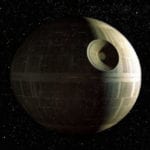 Music
Music  Music
Music  History
History 10 Less Than Jolly Events That Occurred on December 25
 Weird Stuff
Weird Stuff 10 Funny Ways That Researchers Overthink Christmas
 Politics
Politics 10 Political Scandals That Sent Crowds Into the Streets
 Weird Stuff
Weird Stuff Ten Bizarre Facts About The Doge Meme
 Our World
Our World 10 Ways Your Christmas Tree Is More Lit Than You Think
 Movies and TV
Movies and TV The 10 Coolest Stars to Set Sail on The Love Boat
 History
History 10 Things You Didn’t Know About the American National Anthem
 Technology
Technology Top 10 Everyday Tech Buzzwords That Hide a Darker Past
 Humans
Humans 10 Everyday Human Behaviors That Are Actually Survival Instincts
 Music
Music 10 Surprising Origin Stories of Your Favorite Holiday Songs
 History
History 10 Less Than Jolly Events That Occurred on December 25
 Weird Stuff
Weird Stuff 10 Funny Ways That Researchers Overthink Christmas
Who's Behind Listverse?

Jamie Frater
Head Editor
Jamie founded Listverse due to an insatiable desire to share fascinating, obscure, and bizarre facts. He has been a guest speaker on numerous national radio and television stations and is a five time published author.
More About Us Politics
Politics 10 Political Scandals That Sent Crowds Into the Streets
 Weird Stuff
Weird Stuff Ten Bizarre Facts About The Doge Meme
 Our World
Our World 10 Ways Your Christmas Tree Is More Lit Than You Think
 Movies and TV
Movies and TV The 10 Coolest Stars to Set Sail on The Love Boat
 History
History 10 Things You Didn’t Know About the American National Anthem
 Technology
Technology Top 10 Everyday Tech Buzzwords That Hide a Darker Past
 Humans
Humans 10 Everyday Human Behaviors That Are Actually Survival Instincts
10 Examples of Ingenuity Inspired by Star Trek
On September 8, 1966, Star Trek (often referred to as The Original Series) aired on NBC for the first time. The episode was called “The Man Trap,” and it featured a woman who could morph into a rather gruesome salt vampire, both shocking in appearance and behavior. It also grabbed the attention of the American public, which was starting to take science fiction seriously. Though the series was canceled in its third season, it had an incredible following in reruns and inspired a large, globally well-known franchise.
As of 2021, there have been 13 Star Trek movies and 11 television series (three of them animated), with several other TV projects in the works and another movie due in 2023. Star Trek is everywhere, and its influence has pervaded our media, language, technology, and even the future of our nation’s military and exploratory missions. The presence of Star Trek in our culture is a phenomenon unto itself…
Related: 10 Modern Technologies That Almost Turned Out Differently
10 Let’s Start with the Enterprise
In 1775, a British sloop-of-war named George was captured by American forces led by none other than Col. Benedict Arnold, who rechristened the ship USS Enterprise. It served in the Revolutionary War but was burned in 1777 to avoid recapture. For two centuries, a long line of Enterprises, one after another, would serve the U.S. Navy, the last two gaining a lot of public glory. The USS Enterprise commissioned in 1938 was an aircraft carrier and the most decorated ship in WW2, and the one commissioned in 1961 was the first nuclear-powered aircraft carrier in the world!
So when Star Trek was in the planning stages during the mid-1960s, the name Enterprise was in common usage and held in high esteem in the U.S. It was the inspiration for naming the ship that Captain Kirk would command. But with the popularity the show would gather, the naming game took a significant turn…
In 1974 NASA started building the first space shuttle, choosing the name Constitution for their revolutionary new spacecraft (though in truth, it was destined to be experimental and never left the Earth’s atmosphere). However, a large letter-writing campaign targeted NASA over that decision, and in 1976 when the shuttle made its first public appearance in Palmdale, CA, the word Enterprise was painted on its side. Several Star Trek actors were in attendance for the ceremony, along with Gene Roddenberry, the show’s creator.
Virgin Galactic’s first SpaceShipTwo spaceplane, the VSS Enterprise, took its premier flight in October 2010. Of course, it had also been named in honor of Star Trek, but it lacked the fictional ship’s longevity, crashing four years later due to premature deployment of its descent system.
The U.S. Navy is currently building a new nuclear-powered aircraft carrier called, once again, the USS Enterprise, due to launch in 2025 to replace the older warship, which was decommissioned in 2017. And it’s a sure bet that there’ll be more toasts to Captain Kirk at the ceremony than to a historically scandalized Colonel Arnold.[1]
9 The NASA/Star Trek Connection
Since NASA’s compliance with that mid-1970s letter-writing campaign to rename their first shuttle Enterprise, a partnership of sorts has seemed to develop between the government agency and the influence of Star Trek. It’s almost as if the show’s huge popularity in its many manifestations has helped to mold and shape NASA as it reaches out into space, and the agency isn’t fighting the collaboration one bit…
After writing a series of columns in magazines encouraging minority and women participation in the space program, Nichelle Nichols (Lt. Uhura) was invited by NASA to work with recruitment. This stint lasted from 1977 to well into the 1980s. Nichols was a huge success in her alliance with NASA, and one of her ’78 recruits was Dr. Sally Ride, who would become the first female American to reach outer space. She would also have a Federation starship named after her—the USS (Sally) Ride—at least in the realm of Star Trek: Discovery. This is only one of the many examples of Starfleet crossover themes that influence NASA and the agency’s decisions.
The thing is, people who work at NASA grew up watching Star Trek, and the show helped influence the job paths they would later choose, which is why you can see pop-cultural references scattered throughout the agency. For example, in 1993, the entire crew of the shuttle Endeavor posed for a picture dressed in Starfleet uniforms, one of them offering the Vulcan greeting. And in 2012, when the shuttle Enterprise arrived at JFK Airport en route to its final destination—the Intrepid Sea, Air & Space Museum—Leonard Nimoy (Spock) was there to return the gesture. Actually, it’s not unusual for American astronauts to publicly pose in Star Trek uniforms. However, in 2014, when William Shatner received NASA’s Distinguished Public Service Medal, he chose to wear a cowboy hat and jeans.
And back in 2010, when the Space Shuttle Discovery brought the newfangled Window Observational Research Facility up to the International Space Station, the crew wore mission patches that contained letters from the fictitious Klingon language. It seems the moment someone at NASA realized that the acronym for the project—WORF—was also the name of a Klingon character played by Michael Dorn, they just couldn’t help adding the name in his native language to their patches.
But the most shocking display of Star Trek’s influence on NASA would have to be the IXS Enterprise, a conceptual starship capable of warp drive. Through CGI, the ship is made to look somewhat like the TV Enterprise mixed with design elements of the space shuttle, though it is surrounded by two warp rings. It is incredibly profound that engineers who grew up watching Star Trek are currently designing starships that will one day perform like the ones in Starfleet and resemble them. Freaky![2]
8 Mobile Devices
While the development of individual cellphones sprang from preexisting cellular technology such as car phones and pagers, and while these gadgets predated the Star Trek franchise by a good 20 years, still the handheld communicators used by the crew of the Enterprise cannot be discounted from the evolution of our present-day mobile phones. Martin Cooper of Motorola, who led the team that developed the first portable cellphone in 1973, has admitted part of his inspiration came from watching Captain Kirk speak into his gadget. In truth, he’s also stated that Dick Tracy’s wrist radio was his inspiration, but in the ’90s, manufacturers began designing phones that looked an awful lot more like the one Kirk held…
The very first flip phone released in 1996 was called the Motorola StarTAC! Coincidence? Ask Cingular, who released in 2006 the HTC Startrek, not even trying to mask the spelling. Of course, the following year, Apple released the iPhone, completely changing the direction cell phone design would take. However, flip phones are still marketed and have loyal followers who enjoy emulating Kirk each time they make a call.
Smartphones with large touchscreens—predominantly iPhones and Androids—became incredibly popular shortly after their inception, and the technology they used was extended early on to tablets. Perhaps iPad owners should feel as if they’re emulating Captain Jean-Luc Picard each time they use their device. On Star Trek: The Next Generation and other shows set in that timeline, the crew members utilize rectangular, computerized personal devices of various sizes with touch screen technology. These were introduced on TV a good twenty years before Apple rolled out the innovative iPad to the public.
And back in the day, you might have enjoyed playing MP3s on your tablet—digital files developed by Karlheinz Brandenburg after watching an episode of The Next Generation in which Data (Brent Spiner) used the computer to listen to music selections.[3]
This type of inspiration hasn’t just happened with mobile devices. The first home computer—the MITS Altair 8800, which came out in 1975—has been rumored to have been named after the star mentioned in the episode “Amok Time” on The Original Series. It was also a good place to play a text-based video game called Star Trek…if you didn’t mind waiting like FOREVER for the game to load.
7 The Thingamabob in Uhura’s Ear
Communications Officer Lt. Uhura was a stylish gal if ever there were one, what with her groovy-green hoop earrings, flawless hairdo (unless the ship was attacked), super-chic boots, and crazy-cute mini-dress in lipstick red. Her nails were polished, her eyes sparkled, and she had the legs of a ballerina. Yet, she sat at her post each day with an unsightly, metal doohickey in her ear that looked like something that fell out of the wall in Engineering—and probably should have been returned to Scotty pronto!
Her earpiece was a wireless receiver connected to the ship’s computer, and it allowed her freedom of movement while monitoring signals and messages. The Original Series actually boasted a heap of wireless technology, from subspace communication to instantaneous viewscreen transmissions. Even their transporter technology could be considered to be an extremely complex stream of wireless information.
Back in the ’60s, when the show was on the air, most of what we consider today to be wireless was in stages of development. If asked to find something wireless at home, the average American might have pointed at a transistor radio, perhaps the TV (uncertain if the power cord counted), and possibly the kids’ walkie-talkies. Today, however, we don’t give those reruns with Uhura’s earpiece or Kirk’s communicator a second thought, for we are constantly surrounded by wireless signals that help us communicate, recreate, and even navigate to our destination. But back in the ’60s, this stuff was really progressive and, well—far out!
Today we are totally dependent on wireless communication. We are surrounded by WiFi signals, hotspots, radio frequencies, cellphone networks, WANs, MANs, and LANs, often bouncing off and interfering with each other, especially in crowded areas. And as if all that wasn’t enough, we also utilize PANs (personal area networks) such as Bluetooth, which delivers our music and phone calls directly to an earpiece. This is just perfect for screaming out our private conversations on elevators, in restroom stalls, at the gym, and while on public transportation, where we risk disturbing other riders attempting to blast music from their radio apps…[4]
Perhaps Uhura’s eyesore of an earpiece wasn’t so bad after all.
6 Synthehol
While the crew of Kirk’s Enterprise seemed to enjoy genuine alcohol, Picard’s crew instead indulged in synthehol. The booze that Guinan (Whoopi Goldberg) served in Ten-Forward had apparently been re-engineered so as not to cause hangovers, excessive intoxication, or illness, and it supposedly tasted similar to the original. Wouldn’t it be great if we had libations like that in real life? Perhaps we will very shortly…
A scientist in England named David Nutt has been trying to devise an alcohol substitute for years, and he may have found it. The formula, initially called alcosynth (a play on synthehol), has been renamed Alcarelle and is a synthetic substance that targets specific GABA (gamma-aminobutyric acid) receptors in the brain, much like alcohol but without the deleterious effects. Alcarelle consumption does not lead to hangovers, and long-term usage will not cause liver damage. The substance is currently in the development stage, and GABALabs plans to sell the finished product as an ingredient to companies that will market the actual drinks.
They are hoping Alcarelle products will be available in the UK by 2025, and hopefully, they’ll go over well in Scotland, where alcohol is both highly appreciated and consumed. But wasn’t it Montgomery “Scotty” Scott (James Doohan) who once exclaimed, “What in blazes is this!” after his first taste of synthehol while visiting Picard’s Enterprise? The gang at GABALabs has noted that Alcarelle doesn’t really taste good and needs to be mixed with juice to be palatable. Good luck with that, guys.[5]
5 Space Burial
When Starfleet officers die in the line of duty, they’re often placed inside a photon torpedo and jettisoned from the ship, where they will either burn up upon re-entry into a planet’s atmosphere or journey forever into the dark void of space. While in outer space, death is a concern that real astronauts will have to deal with someday as we begin to send manned missions farther and farther out into the unknown. Certainly, space burials will be the answer during long journeys to distant stars.
The very first space burial, interestingly enough, was that of Gene Roddenberry, the creator of Star Trek, though it was basically honorary. Roddenberry died in 1991 of cardiac arrest, and the following year, a portion of his ashes were flown into space upon the shuttle Columbia, though they were returned to Earth with the ship.
Likewise, James Doohan really got around after his death. The character of Scotty had a huge following, and many people were inspired by him to pursue a career in engineering. In 2005, Doohan died at age 85, and two years later, a portion of his cremated ashes flew into space for four minutes on the SpaceLoft XL rocket. In 2008, however, his ashes left Earth twice, first in August on the SpaceX Falcon 1 rocket, which failed to reach orbit, and secondly in October when entrepreneur Richard Garriott smuggled him aboard the International Space Station as a private citizen astronaut on a 12-day mission. The plan had been concocted by the actor’s son, Chris Doohan, who claims his father’s ashes are still aboard the ISS hidden under floor cladding. And a portion of Doohan’s remains went up in space again in 2012 on the SpaceX Falcon 9 rocket—successfully this time—for nine days.
And guess what? Yet another portion of Doohan’s ashes will be going up into space in 2022 on a Celestis Memorial Spaceflight—the maiden flight of the Voyager Service whose “passengers” will not be returning to Earth. This mission has been dubbed the “Enterprise Flight” because Doohan will be joined by the ashes of Gene Roddenberry and his wife, Majel Barrett Roddenberry, who played numerous roles such as Number One, Nurse Christine Chapel, and Lwaxana Troi and who died in 2008. These three icons of the Star Trek franchise, along with the ashes of others, will zip by the moon to get a fly-by, gravitational boost which will propel them out of the solar system and into the unknown depths of outer space where no human—nor human remains—have ever beforehand traversed…[6]
4 Virtual Reality
Gene Dolgoff, the CEO of Holobeam Technologies Inc., has been an innovator in the science of holography and 3-D imaging since the early ’60s and was the inventor of holographic transfer printing for credit cards in 1971. One of the highlights of his career was meeting with Gene Roddenberry and his wife Majel in ’73 when he explained how holograms work and their potential for changing the future of entertainment and engineering. Roddenberry was fascinated with the concept of “matter holograms” and the possibility of entire rooms comprised of a “holographic environment,” a concept introduced just one year later on Star Trek: The Animated Series.
The Animated Series was probably the least popular of all the series considered canonical, and most people didn’t take it very seriously, then or now. For starters, they booted Chekov from the bridge; they added a feline character who looked as if she’d just beamed up from a Hanna-Barbera cartoon; plot lines were often pretty bizarre; and the animators frequently miscolored items, uniforms, and people. But in an episode of the short-lived second season called “The Practical Joker,” an area of the ship capable of employing holographic environments, simply called the recreation room, was introduced. After the series’ cancellation, however, the concept would not be further explored for thirteen years.
In September of 1987, Star Trek: The Next Generation premiered, and Picard’s Enterprise was still housing that holographic rec room when it did. However, it had been rechristened “the holodeck,” with entire episodes revolving around this unique form of off-duty personal entertainment. Of course, Quark from Star Trek: Deep Space Nine rented out such units, called holosuites, for profit, but what else would a Ferengi do with such lucrative technology?
Just as a generation of astronauts at NASA grew up fascinated with Kirk’s Enterprise, the tech developers and engineers working with virtual reality today grew up watching Picard and his holodeck. Likewise, the direction VR is heading is directly inspired by the show. But how far along are we? Sure, we have virtual gaming and cockpit training, not to mention computer-generated engineering applications, vacation test runs, and house shopping. But how soon will we have holodecks in our homes just like the one on the Enterprise?
One of the biggest challenges is offering a full-sensory experience without the headset; in other words, rather than wearing our VR, the “holomatter” would be coming at us—at our naked eyes and ears, our noses and fingertips. And while many tech companies seem to indicate that we’re almost there, many more skeptics warn that we’ll never actually reach that level of virtual reality. The science behind some of the functions of the television holodeck is as hypothetical as time travel and seems to break the laws of physics, but let us remind ourselves that their version of the contraption originated on a Saturday morning cartoon. And do we truly want our virtual experiences to completely echo the ones on Star Trek, which could offer a reality much more pleasant and enticing than real life? We’d never want to come out of the darn thing!
Although…the guy who started all this, Gene Dolgoff, remains optimistic about the possibility of real-life holodecks. He even claims “matter holograms” could one day lead to transporter technology, which would reconstruct a holographic person replacing someone “transporting” from a different geographic location. And therein lies a ton of ethical questions and concerns, such as how to obliterate the original person being scanned, copied, and downloaded elsewhere. Moving along…[7]
3 Star Trek References Exist Every-Freakin’-Where
Star Trek references, both obvious and subtle, have been inserted into the average American’s life since the vast popularity of The Original Series in syndication. They are part of our everyday vocabulary, imagery, and expression, often showing up in advertising and music, and thus they shape how we think, communicate, and navigate our lives.
There are many sayings from Star Trek that either originated on the show or were popularized by association, such as “landing party,” “class M planet,” “warp speed,” and “make it so.” And mention of “tribbles,” “transporters,” “the prime directive,” or “food replicators” is understood across generational borders. Likewise, words such as “stardate,” “redshirt,” “phaser,” and “tricorder” have entered our pop-cultural lexicon, along with phrases such as “Vulcan mind-meld,” “Alpha Quadrant,” “universal translator,” and, of course, “beam me up.” Star Trek has also lent us a couple of famous fill-in-the-blank lines: “I’m a doctor, not a ___!” and “where no ___ has gone before!”
Star Trek imagery also pervades our culture, with well-known visuals such as the arrangement of the bridge, and the cuts and colors of the uniforms within, being used to set up many a comedic TV sketch (think SNL and Family Guy, for starters). There are also shows such as The Big Bang Theory and Futurama with Star Trek references interwoven throughout most of their episodes. And all genres of popular music contain shout-outs to Trekkies with songs such as “99 Red Balloons” by Nena, “Californication” by the Red Hot Chili Peppers, “Intergalactic” by The Beastie Boys, and “Beach House on the Moon” by Jimmy Buffett. The sound of the red-alert klaxon was used mischievously by Ariana Grande in her song “Problem,” and the band Information Society borrows the voice of Leonard Nimoy in their hit “What’s on Your Mind (Pure Energy).”
Possibly the very first Star Trek-inspired commercial aired in 1969 when a Vulcan dressed as a Klingon beamed down to show a bewildered mom the wonders of Cheer laundry detergent. From thereon out, Trek references have appeared in ads for everything from Samsung and MCI to Pizza Hut and Twizzlers. In 2012 an IKEA commercial borrowed an instrumental from “Amok Time” (The Original Series), and in 2016, Andorian aliens helped peddle Mexican avocados in a Super Bowl ad. This particular angle is widely popular in print, television, radio, and internet advertising. The Ferengis should be mighty proud that the fictional universe in which they live is very lucrative for making a buck in this one.[8]
2 The United States Space Force
On December 20, 2019, President Donald Trump signed into effect the establishment of the United States Space Force, officiating a branch of the military which had been forming within the confines of the Air Force since the 1940s. And a month later, when he revealed the agency’s official seal, people were amazed that it looked very similar to the fictitious seal of Starfleet Command! The internet went abuzz with comparison pictures casting copycat shame, but the simple truth is the delta symbol (the arrowhead) has been used by the Air Force specifically for its early space program since 1961. It appears Star Trek did the actual borrowing of the delta symbol, but the USSF has also done a bit of borrowing…
Though the agency is new, it seems to be having a little fun with Trek-isms, much like NASA. The USSF has a department called the Space Operations Command, the acronym of which—SpOC—is purposely arranged to sound like “Spock.” They’ve also named their new tracking program “Kobayashi Maru” after a simulated training exercise James T. Kirk once outsmarted. But unlike NASA, whose scientists grew up watching Star Trek, the Space Force is made up of military officers, which makes a world of difference between the two agencies and how they will further develop and interact.
Many of the astronauts at NASA, an agency that has always taken a peaceful stance on space exploration, have been or are active military personnel, and the USSF is an actual branch of the Armed Forces straight through. While the starship Enterprise’s credo “to explore strange new worlds” and “to seek out new life and new civilizations” sure sounds like a peaceful endeavor, it was still armed with ship’s phasers and photon torpedoes, its crew likewise armed with phaser pistols. NASA and the USSF have already established a protocol for interactive exploration and security, as they’re literally soaring through each other’s turf, but is the notion of peaceable exploration while carrying an arsenal of kick-ass weaponry feasible for collaborative missions in the future? It seemed to work on TV.[9]
Time will only tell if the eagle really can fly with the dove…
1 Where No Nonagenarian Has Gone Before
On October 13, 2021, William Shatner—at the age of 90—flew into space aboard Blue Origin’s pilotless New Shepard rocket with three other passengers: microbiologist Glen de Vries, entrepreneur Chris Boshuizen, and Audrey Powers, VP of flight ops at Blue Origin. They bounced around in zero-G for about three minutes before falling back to Earth and touching the ground at a gentle 2 mph. Upon emerging from the hatch, Shatner was embraced by Jeff Bezos, to whom the actor’s first words were, “It was so moving to me.” He followed by saying, “I hope I never recover from this. I hope that I can maintain what I feel now. I don’t want to lose it.”
Another interesting comment came from de Vries to reporters when he described Shatner’s trip to space as “the ultimate manifestation of science fiction becoming science.” Perhaps, as we watch our space technologies expand and flourish, this particular voyage will become the epitome of Star Trek’s influence on and relationship with our modern-day space programs, whether they be NASA, the USSF, or privately-funded endeavors. After all, Bezos has admitted that Star Trek was his inspiration for launching Blue Origin in the first place, and yes, Shatner flew for free on his monumental flight.
George Takei (who played Ensign Sulu) threw some rather critical shade, accusing Shatner of being an unfit guinea pig. But the most interesting observation Takei offered was: “He’s boldly going where other people have gone before.”
And he was right. Back in 1966, when Star Trek first aired, only a handful of people in the world had achieved the title of astronaut or cosmonaut, and only two countries had been represented in the process. In the 55 years that have ensued, we’ve sent men to the moon, built space shuttles, created the Int’l Space Station, and seen the rise of commercial space tourism. As of 2021, there have been 42 countries represented in space through the participation of approximately 600 astronauts (the exact number changes per count as the criteria for having achieved space altitude varies, and the roles of “astronaut” and “passenger” are often counted separately).
So yes, many other men, and women, have made it to space beforehand. But out of all those individuals who have blasted free from Earth’s atmosphere, Shatner, at 90, is the oldest, and kudos might be offered if only for that achievement. And how profound for William Shatner, who first explored space at the age of 35 as James T. Kirk, to have had the unique opportunity to explore it 55 years later in real life as himself.[10]








